TL; DR
A new tech makes it affordable to keep warning lights on wind turbines switched off, unless a plane actually gets so close that the pilot must be alerted to the turbine.
This helps communities to become more likely to green-light turbine constructions, because it largely eliminates light pollution that allegedly threatens communities' "dark skies."
Previously, always-on warning lights triggered two of the "three deaths" that cause many substantial innovations to fail:
Some communities considered the lights "such a downside that turbines aren't worth it." And prior solutions to avoid the need for warning lights were "too expensive for turbines to be worth it."
The story
Wind energy has been on a growth streak (+50% growth in global installations 2023 vs. 2022). But some communities are resisting wind turbine installation, for a variety of reasons.
One reason is worry about the warning lights that tall wind turbines need to alert planes and helicopters to their presence.
But as of 2025, Germany requires the use of new demand-based Aircraft Detection Lighting Systems (ADLS) that keep warning lights off unless an aircraft is actually approaching.
(Other countries, e.g., the Netherlands and Austria, are also considering or have implemented regulation that creates the infrastructure for use of such on-demand ADLS systems.)
According to solution providers, such systems mean that warning lights can stay switched off 97%+ of the night.
In other words, communities get their dark nights back!
While the light pollution may not be a concern once wind turbines are installed, Austrian providers have found them to be a concern when communities learn of proposed new wind parks.
[Source: Storch, Lorenz. Bayerischer Rundfunk (2024) and Laufer, Nora. Der Standard (2024).]
The point for doing credible innovation work
In his book Loonshots, author Safi Bahcall offers a much more actionable alternative to the better-known "adoption curve" with its famous adoption "chasm."
Bahcall points out that many new innovations face "three deaths." Those deaths can occur at any point, not just at the stage where the adoption curve places the "chasm" (i.e., after "innovator" and "early adopter" users have adopted).
Bahcall does not formally label the Three Deaths, as far as I have found.
But in practice, I find the Three Deaths roughly to stem from these issues:
- The innovation is never going to work
- The innovation is too expensive or profitable enough
- The innovation's downsides are too great
Any and all of these can (and often do) scuttle innovations.
In the case of wind turbine lights, two "deaths" appear at once:
- The lights are a "downside" that some communities claim make wind turbines unattractive.
- Other solutions existed before. But those solutions were "too expensive" to achieve wide-scale adoption. In particular, some wind turbines have their own radar systems. That way, the turbine can be "aware" of approaching aircraft, which require the lighting of warning lights. But such radar systems are expensive.
By contrast, the new laws mandate the installation of transponders in all aircraft, to alert a turbine to the craft's presence.
This means that lights can still stay off much of the night, eliminating their "downside" to communities.
And the cost of making the new system work is now spread across many aircraft, rather than landing squarely on the owners of wind turbines, eliminating the "expense" problem.
So what?
Don't believe that you'll get smooth sailing until reaching the "chasm" of the adoption curve. You may hit any or all of the "three deaths" anytime during your innovation work.
Look out for the three deaths and think ahead to possible ways to circumvent or overcome them!
Footnotes
Original story
🇺🇸🇬🇧🇮🇳🇦🇺 English auto-translation (for your convenience, not guaranteed for accuracy):
🇩🇪 Original German Stories:
Further reading
Bahcall, S. (2019). Loonshots. St. Martin’s Press. https://www.bahcall.com/
Credits
Photo (untitled) of wind turbines in Germany by Andrew Dawes on Unsplash
Disclaimers
External links for your convenience. I do my best to link to reputable sources. But I cannot guarantee or accept liability for 3rd-party links beyond my control.
I have no affiliation with or investments in organizations mentioned in case studies–nor do I ever unless explicitly called out.
The organizations mentioned do not endorse me in any way. Nor do I endorse them. These case studies are offered merely for general information purposes. They do not imply that certain choices or actions are effective or ineffective, either for the organizations mentioned or for you. Consult your own professionals before taking action on anything mentioned here.
I have received no incentive of any kind for mentioning or not mentioning organizations or for the perspectives I take. Opinions voiced above represent my subjective, editorial take, based on public data.
I use all third party content in accordance with "fair use," "open source," and similar permitted uses, to the best of my knowledge. Please contact me in case of legitimate questions.

![[Case study] Wind power overcomes the three deaths](https://images.unsplash.com/photo-1667580638891-c77ea1ff683d?crop=entropy&cs=tinysrgb&fit=max&fm=jpg&ixid=M3wxMTc3M3wwfDF8c2VhcmNofDR8fHdpbmQlMjB0dXJiaW5lJTIwZ2VybWFueXxlbnwwfHx8fDE3MjcxOTU1Nzh8MA&ixlib=rb-4.0.3&q=80&w=1075&h=650)
